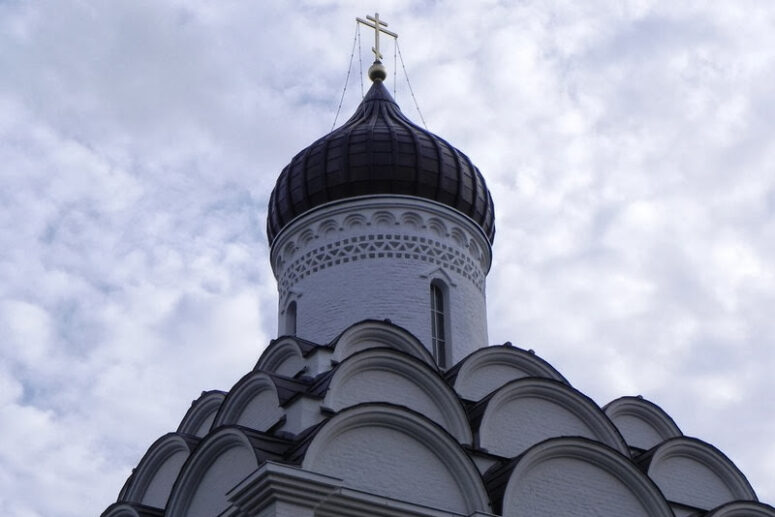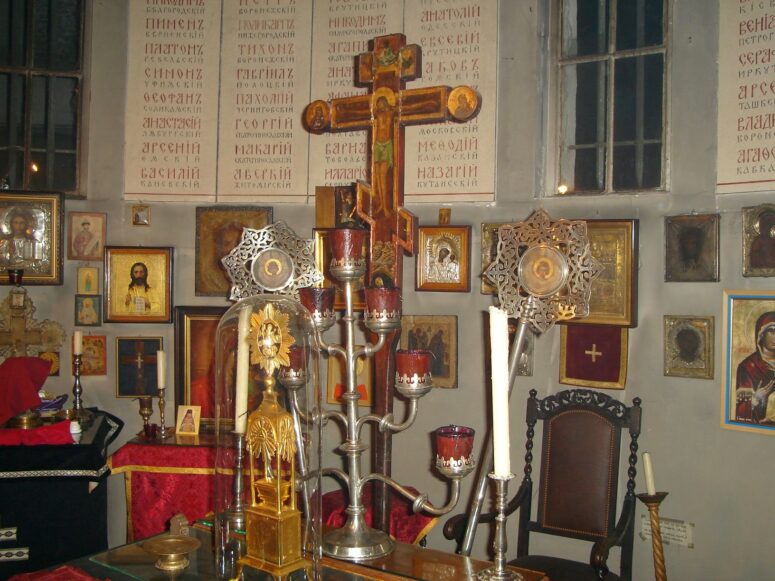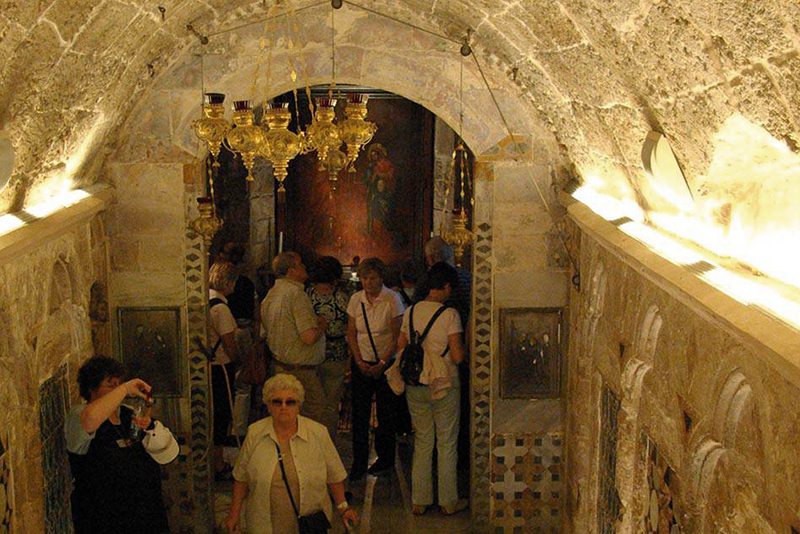
This Orthodox Church that stands in one of Brussels main streets was in commemoration of the royal martyr Nicholas II, the royal family and all the people persecuted for their faith under Soviet Rule. This is a memorial church dedicated to Saint Job, whose birthday coincided with his feast day. The foundation stone of the church was laid in 1936 with the blessing of His Holiness Varnava, Patriarch of the Serbian Orthodox Church, and the Blessed Anthony, Metropolitan of Kiev and Galicia. It was not fully complete until after World War II, in 1950. Its first parson was Archbishop John (Maximovitch).

Archbishop John’s special relationship with the Royal family
He always held this church dear to his heart, and described its special meaning to him in the following way: “This church is a like a candle that the Russian Church abroad has lighted in honour of the royal family and all those martyred with it and for it. It keeps burning, waiting for the time when, by the mercy of God, a new magnificent church will rise at the site of the royal family’s martyrdom of all of the Russian people.”
According to eyewitness accounts, Archbishop John mourned the Russian royal family wholeheartedly and commemorated it every year on the day of its martyrdom. He fully recognised the impact of this tragedy on the whole of the Russian people. In Shanghai or Brussels, he always told his Russian speaking flock to remember this day and spend it in repentance and prayer, regardless of political views. As Duchess Apraskina recalls, Archbishop John used to pray all night in this monumental church and kept its doors open for all parishioners. He read the Psalter and celebrated memorials services. To the duchess, these moments were unforgettable.

Father John treated the royal family with great awe and respect. In his remarks about Tsar Nicholas, the archbishop wrote, “The abuses and insults, imprisonment and other misadventures he bore with the patience that made him akin to Saint Job of our days. With his torment, he exalted himself in the spirit more by the glorious history of his reign.” These remarks were given serious consideration in the canonisation of the Tsar and the royal martyrs in 1981. Archbishop John remained parson of the memorial church until his move to San Francisco in 1964.
The architecture of the church and the relics of the Holy Royal Martyrs
Russian architect Nikolai Istselennov presided over the construction of the church, and the money came from the donations of 15,000 Orthodox emigrants worldwide.
Emperor Nicholas II held in great regard the old traditions of Russian architecture. In reverence to his taste, it was decided to model the memorial church in Brussels on the annex to the Holy Transfiguration Church in Ostrov, Moscow Region.

Discovered in 1920, the relics of the Royal Family were entrusted to Metropolitan Seraphim, Archpriest of the Western European Episcopate in the memorial church, which was then in the process of construction. The relics of the Holy Martyrs were sealed in a lead container and immured in a church wall. During the major works of restoration in 2012, the container with the relics was rediscovered, together with a hand-written document describing the identity of the relics. The Russian Orthodox Church Abroad declined to subject the discovery to further examination, leaving the relics unsealed but open for the worshippers to revere. Memorial plaques on the Church’s walls list the names of the victims of the God-fighting regime. During the construction of the church, any willing person could commemorate their martyred family members by having their names written on the plaques. Many people listed on the plaques were not given a Christian burial, and their relatives come to pay tribute to them at the church like they would visit a grave. The plaques with the names of the royal passion bearers and 122 new martyrs from the clergy were placed on the altar area, and those with the names of the laity are found on the walls.


Above the altar is the icon of the Holy Theotokos Unbreakable wall,

and above the door is the mosaic of the Fedorovskaya icon of the Mother of God. It was dear to the Russian royal family as it was connected to the election to the throne in 1613 of Tsar Mikhail Fedorovich, the first from the Romanov dynasty.

The Church keeps several relics – fragments of the Holy Life-Giving Cross of the Lord, the relics of the saints of the apostolic and later times and Russian saints, the greater and smaller crosses of Alexander Nevsky with particles of their holy relics. The Church also keeps multiple royal artefacts and possessions of the Royal Family, given to it by Duchess Xenia Alexandrovna, notably, the bible of Tsarevich Alexey, a gift from the empress, a cross and the body icons found at the place of the royal family’s martyrdom, an icon of John the Baptist from Ipatyev’s house, where the royal family was kept under guard, the straps and uniform jacket worn by the Tzar.

Archbishop Mikhail (Donskov), who knew Archbishop John (Maximovitch) in person, served as the memorial church’s parson for more than ten years.
He retired in 2018, but the church continues to keep the memory of the Holy Royal Passion-Bearers and other martyrs for their faith beautified by the Church. May the Lord shed His mercy on us by their prayers.




